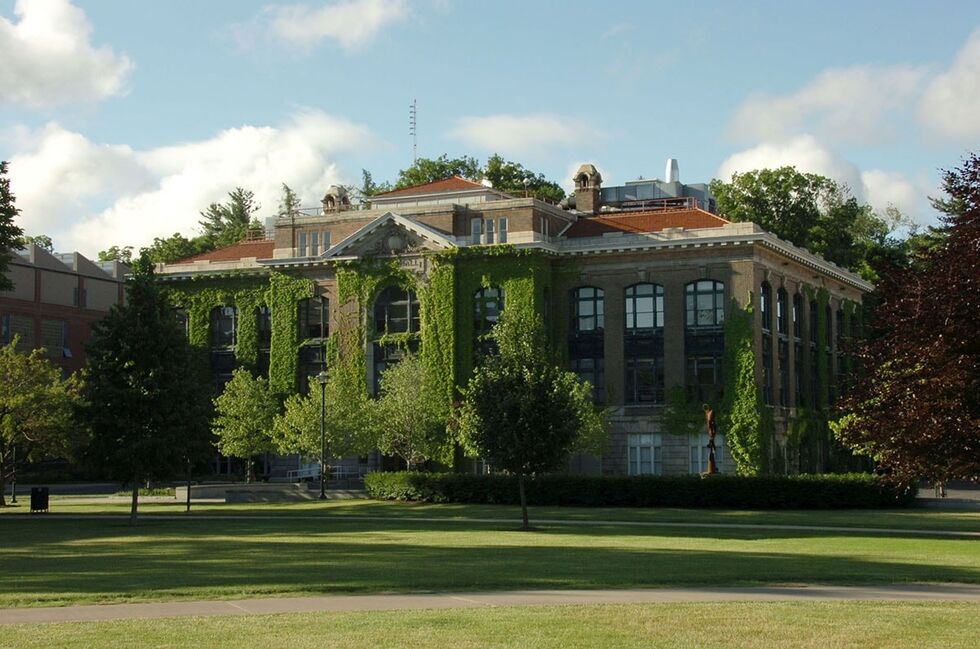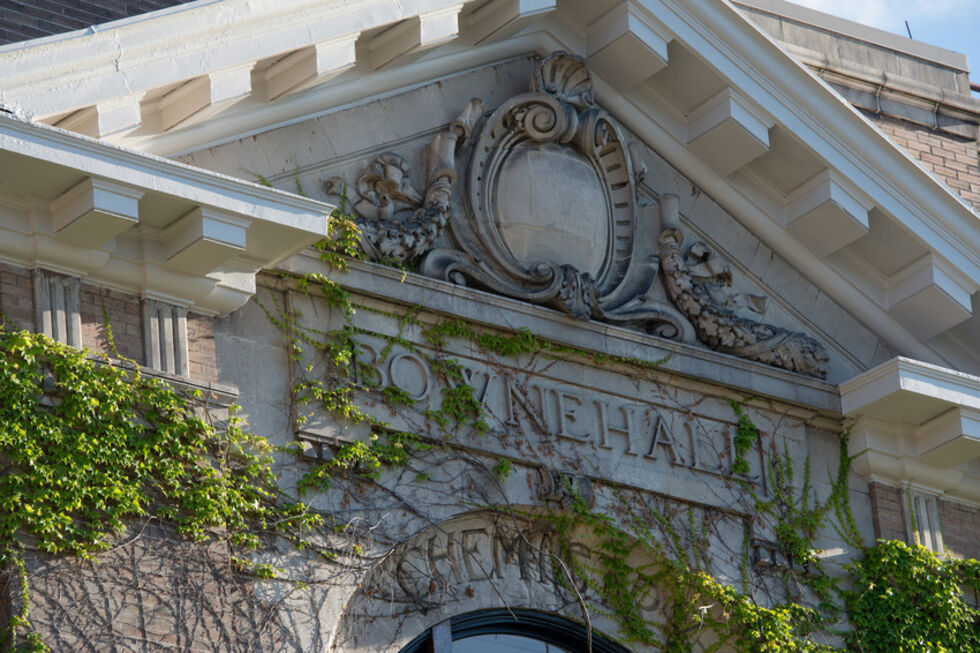Bowne Hall
"Bowne Hall" by Professor Frederick W. Revels, Class of 1895 , 1906-1909
Bowne Hall was named for Samuel W. Bowne, an SU trustee from 1893-1911. Originally called Bowne Hall of Chemistry, the building was constructed with the goal of being fireproof. Bowne Hall, along with Carnegie Library (1907), Sims Hall (1907), Archbold Stadium (1908), and Archbold Gymnasium, were all built as part of the “Great Quadrangle” construction. Bowne Hall currently serves as home for the women’s studies, fine arts, and undergraduate chemistry departments as well as the University’s Honors Program and the Graduate School. Under the building’s ivy is an engraved sign over the large, central arch which reads “Bowne Hall of Chemistry,” and over the entrance is an engraved chemistry motif that consists of books, beakers, a scale, and an antique water distillation apparatus.
Prior to the construction of Bowne Hall, a chemistry building was needed on campus since the Department of Chemistry outgrew its space in the basement of the Hall of Languages. According to newspaper accounts of the time, constructing Bowne Hall required considerable stripping of the foot of the University’s Mt. Olympus, which accounts for the shape of Bowne Hall. Renovations to the building in 1989 updated classrooms, labs and offices and removed asbestos from the building. Space was revamped using a variety of sustainable techniques and materials. Seventy-five per cent of the demolition debris was recycled and steel framing was made from recycled scrap iron. Original architectural details, however, such as exposed decorative steel trusses and original windows, were preserved. The building underwent further renovations in 2010.
Samuel W. Bowne was born January 30, 1842 in Montgomery, NY. In 1970, he began his career as a broker on Wall Street. Bowne then pivoted and became a partner in the drug firm, Scott, Platt & Co. in New York City. He led the drug firm for fifteen years. He had other philanthropic interests beginning as a liberal giver to the Methodist Episcopal Church. He established the church fund known as the “Twentieth Century Movement,” his first contribution was $100,000, later growing into $1,000,000. Many of his charitable contributions were unknown to the public. Bowne for several years financially supported eighteen to twenty families. Among his other philanthropies were the Bowne Gymnasium, at Drew Seminary in Madison, NJ, and the Bowne Hall of Chemistry, at Syracuse University, which was completed soon after his death. Samuel W. Bowne passed away in Montclair, NJ on October 29, 1923. He was a trustee of Syracuse University and a generous contributor to the University. Bowne Hall of Chemistry closed in the afternoon of Oct. 31 on account of the funeral of Mr. Bowne.
SU University Archives; SU Photo and Imaging Archive; Three noted philanthropists dead. (1910). Practical Druggist and Pharmaceutical Review of Reviews; Smalley, F. (1911). Alumni Record and General Catalogue of Syracuse University: 1872-1910, including Genesee college, 1852-1871 and Geneva medical college, 1835-1872. Volume 3 Part 1.


